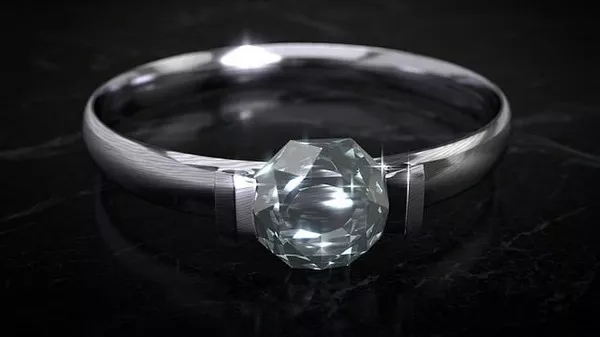Silver, one of the most lustrous and coveted metals in the world, has a long history of being used for various purposes, from jewelry and currency to industrial applications. But when it comes to its magnetic properties, silver often leaves people wondering: does a magnet stick to silver? In this article, we will delve into the world of magnetism and silver, exploring the reasons behind silver’s non-magnetic nature, its unique characteristics, and the implications of these properties.
Magnetism: A Brief Overview
Before we delve into the magnetic properties of silver, it is essential to understand the basics of magnetism. Magnetism is a fundamental force of nature, characterized by the attraction and repulsion between certain materials. Materials can be classified into three main categories concerning their magnetic behavior:
Ferromagnetic materials: These are materials, such as iron, nickel, and cobalt, that exhibit strong magnetic properties. When exposed to a magnetic field, ferromagnetic materials can become magnetized and are attracted to magnets. They retain their magnetization even after the external magnetic field is removed.
Paramagnetic materials: Materials in this category, including aluminum and platinum, exhibit a weaker magnetic response. They become weakly magnetized when subjected to a magnetic field and lose this magnetization when the field is removed.
Diamagnetic materials: Diamagnetic materials, like silver, are characterized by their lack of magnetic properties. When exposed to a magnetic field, they are weakly repelled by the magnet. However, this repulsion is typically so weak that it is often imperceptible to the human senses.
The Non-Magnetic Nature of Silver
As previously mentioned, silver falls into the category of diamagnetic materials. Diamagnetic materials exhibit a unique response to magnetic fields – they create a weak repulsive force when subjected to an external magnetic field. This repulsion is due to the motion of electrons within the material, which generates small, opposing magnetic fields.
Silver’s non-magnetic nature can be attributed to its electron configuration and the arrangement of its atoms. Silver (Ag) has 47 electrons distributed across several energy levels or electron shells. The innermost shell, which contains two electrons, is followed by eight electrons in the second shell and 18 electrons in the third shell. The remaining 19 electrons are distributed in the fourth and fifth shells.
The outermost electron shell of silver contains a single electron, which makes silver more stable and less likely to exhibit magnetic properties. In diamagnetic materials like silver, the electrons’ motion counteracts the external magnetic field, resulting in repulsion rather than attraction. This behavior is a consequence of Lenz’s law, which states that induced currents within a conductor, like a metal, always generate magnetic fields opposing the change in the original magnetic field.
Implications of Silver’s Non-Magnetic Nature
Silver’s lack of magnetic properties has both practical and scientific implications. Let’s explore some of these implications in more detail.
Jewelry and Accessories: One of the most well-known uses of silver is in the production of jewelry and accessories. Due to its non-magnetic nature, silver jewelry is not prone to magnetic interference, making it an ideal choice for those who want to wear jewelry without worrying about it being attracted to magnets.
Coinage: Silver has been historically used for the minting of coins, and many countries still produce silver coins for numismatic purposes. The non-magnetic nature of silver is an advantage in this context because it ensures that silver coins do not adhere to magnets, making them easy to handle and count.
Scientific Applications: Silver’s diamagnetic properties are of interest in scientific research and experimentation. Scientists can use diamagnetic materials like silver to study the effects of magnetic fields on matter, understand the behavior of electrons, and explore electromagnetic phenomena.
Medical Devices: Silver’s non-magnetic nature makes it suitable for use in various medical devices, including MRI machines. These devices utilize powerful magnetic fields, and having non-magnetic components ensures accurate imaging and diagnostics.
Electronics: While silver itself is not used as a magnet in electronics, its non-magnetic properties can be advantageous. In some cases, materials that are non-magnetic are preferred to prevent interference with sensitive electronic components.
Common Misconceptions About Silver and Magnetism
Despite the scientific understanding of silver’s non-magnetic nature, there are some common misconceptions and myths surrounding this topic. Let’s address a few of these misconceptions:
“Silver is attracted to magnets.” This is false. Silver is a diamagnetic material and is weakly repelled by magnets.
“All silver objects are non-magnetic.” While pure silver (Ag) is diamagnetic, it’s essential to note that not all silver objects are made of pure silver. Some silver alloys may contain other elements, and the presence of these elements can influence the material’s magnetic behavior.
“Silver jewelry can be used to detect fake silver.” This myth suggests that real silver jewelry can attract magnets, while fake silver won’t. In reality, both real and fake silver jewelry are generally non-magnetic, making this a poor method for authenticating silver.
Conclusion
In summary, silver is a diamagnetic material, which means it is not attracted to magnets but, in fact, weakly repelled by them. This unique property is a consequence of the arrangement of electrons in its atomic structure and is an essential characteristic of this precious metal. Understanding silver’s non-magnetic nature has practical implications in various fields, from jewelry and coinage to scientific research and medical applications. It also dispels common misconceptions about silver’s magnetic behavior, which can help individuals make informed decisions when handling and working with silver objects. Whether you’re wearing a silver necklace, handling silver coins, or conducting scientific experiments, knowing that silver does not stick to magnets is fundamental to appreciating this versatile and valuable metal.


